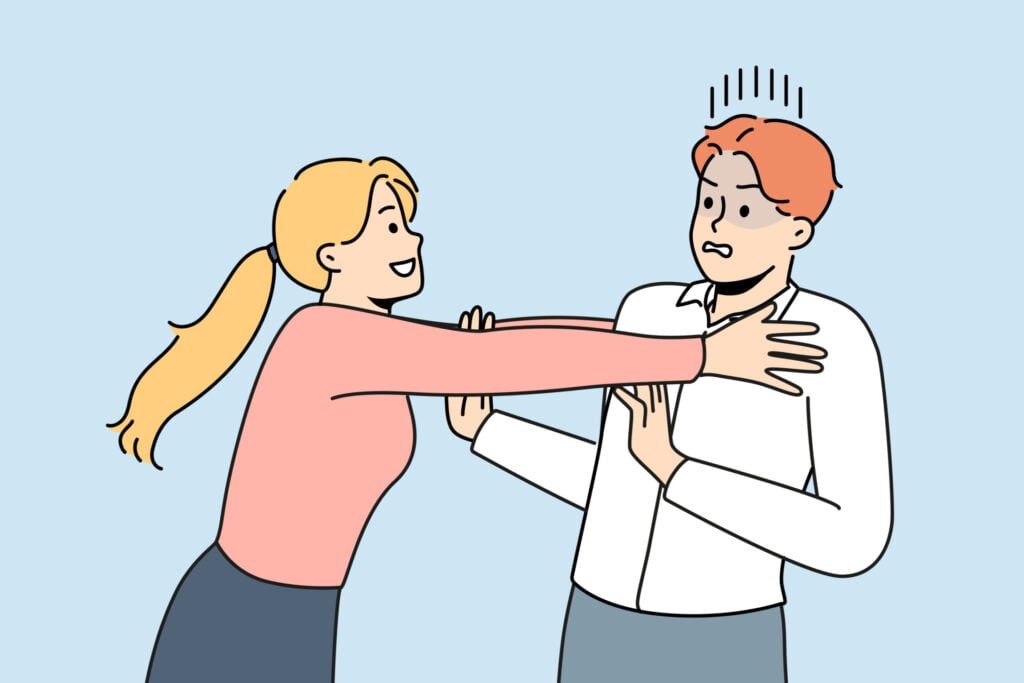Dating someone with an avoidant attachment style can be challenging, but with patience, understanding, and effective communication, it is possible to build a healthy and fulfilling relationship.
Given their emotional unavailability and deactivating strategies, developing a deep and intimate relationship with avoidant individuals can be difficult to achieve.

First, you must understand what avoidant attachment style is. People with an avoidant attachment style often have difficulty getting close to others and tend to be uncomfortable with too much emotional intimacy. They value independence and self-sufficiency.
Attachment styles do exist on a spectrum, and not everyone with an avoidant attachment style is the same. While individuals can vary in the degree of avoidance they exhibit, there are a number of commonalities that can help guide your approach in dating someone with this attachment style.
Here are some other commonalities that can help you better understand someone with an avoidant attachment style:
- Desire for Independence: Most people with an avoidant attachment style value independence and autonomy. They fear getting too close or becoming too dependent on a partner.
- Difficulty with Emotional Intimacy: They have difficulty expressing their feelings and needs clearly. They prefer to keep interactions lighthearted and may steer clear of vulnerable conversations. They will often use these attachment-deactivating strategies as a way to maintain distance and protect themselves from the perceived risks of emotional connection.
- Sensitivity to Criticism: Despite their independence and perceived confidence, avoidant individuals often struggle with low self-esteem. They are sensitive to criticism and do appreciate occasional reassurance of your commitment and feelings for them.
- Refusing Commitment: Highly avoidant individuals may be reluctant to commit to a long-term, serious relationship. They might even sabotage their own relationships, especially when things are going well. They expect that other people will eventually abandon them, so they tend to push their partners away first.
How to Increase Intimacy and Communication with an Avoidant Partner
Here are some tips to help you navigate a relationship with someone with an avoidant attachment style:
Be Patient and Respectful of Boundaries
People with avoidant attachments often feel overwhelmed by intimacy. Understand that your avoidant partner may need time and space to open up, so do not push for emotional or physical intimacy too quickly.
Let them express their boundaries and set the pace for opening up. You can give them the space they need while also showing them that you’re there to listen without judgment when they are ready.
You must recognize that your partner’s avoidant attachment style may not change overnight. You should set realistic expectations for progress and be prepared for setbacks along the way.
However, you should also maintain your own boundaries. If their avoidance behavior is causing you distress, you should let them know that you may need to take a step back from the relationship.
Open and Non-Judgmental Communication
You should create a safe space for open and honest communication and encourage them to share their thoughts and feelings at their own pace.
Be aware that the more you push, the more they pull away, so make sure to approach communication in a calm, yet assertive manner.
When discussing your own feelings or needs, use “I” statements to express yourself. For example, say, “I feel closer to you when we have deep conversations,” instead of, “You never open up to me” as this approach is less likely to make your partner feel defensive.
You can also help them explore their own feelings by asking specific, but open-ended questions. When your partner does open up, validate their emotions and tell them that you appreciate their willingness to share.
Be Secure in Your Own Attachment Style
Your own attachment style will influence how you perceive and experience the behavior of someone with an avoidant attachment style.
It is essential to have a secure attachment style yourself, so you can provide stability and understanding in the relationship.
Additionally, if you have an anxious or disorganized attachment style, their avoidant behavior can be especially triggering for you. Your own attachment security can reduce relationship anxiety and allow you to be more resilient to the ups and downs of the relationship.
Being secure in your own attachment style also helps you avoid falling into codependent behaviors, which can be a challenge when dating someone with an avoidant style. You can maintain your independence and emotional well-being while still being supportive of your partner.
Therapy
Consider couples therapy with a therapist experienced in attachment issues. Therapy can provide a structured and supportive environment for both of you to work on your communication and intimacy challenges.
The therapist can help you to understand each other’s attachment styles, behaviors, and needs from an objective standpoint.
Attachment styles are “working models” that can develop throughout our lives. We can all learn to feel more secure in relationships with the right attitude, self-awareness, and willingness to work on our insecurities.
In summary, when dating someone with an avoidant attachment style:
- Foster open and honest communication
- Respect your partner’s need for personal space and independence
- Be patient and understanding of their fears and insecurities
- Understand what avoidant attachment style is and how it can manifest in the relationship
- Communicate your feelings and needs clearly and calmly
- Validate your partner’s emotions and avoid minimizing their feelings
- Understand that changes in attachment styles take time and may require professional help
- Ensure that you are secure in your own attachment style
- Take care of your own emotional well-being
- Acknowledge and celebrate any progress you both make in building intimacy and improving communication
Julia Simkus edited this article.
Sources
Fraley, R.C., Roisman, G.I., Booth-LaForce, C., Owen, M.T. & Holland, A.S. (2013). Interpersonal and genetic origins of adult attachment styles: a longitudinal study from infancy to early adulthood. Journal of Personality and Social Psychology, 104 (5), 817-38.
Nickerson A, Nagle RJ. Parent and peer relations in middle childhood and early adolescence. Journal of Early Adolescence. 2005; 25:223–249.
Sheinbaum, T., Kwapil, T.R., Ballespí, S., Mitjavila, M., Chun, C.A., Silvia, P.J. & Barrantes-Vidal N. (2015). Attachment style predicts affect, cognitive appraisals, and social functioning in daily life. Frontiers in Psychology, 18 (6), 296.
Simpson, J.A. & Rholes, W.S. (2017). Adult Attachment, Stress, and Romantic Relationships. Current Opinions in Psychology, 13, 19-24.

